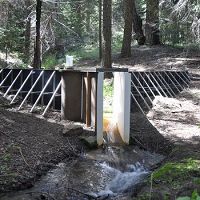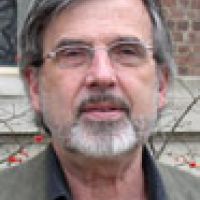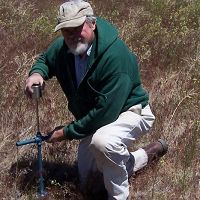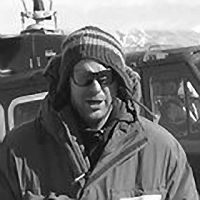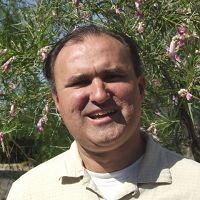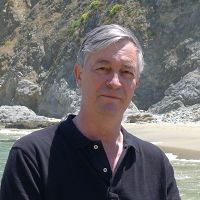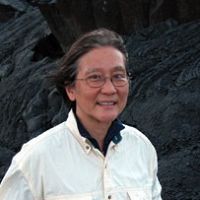Water Resources Research Special Collection: Concentration-discharge relations in the critical zone
30 Oct 2017
Water Resources Research published a new special collection in September 2017 featuring concentration-discharge research from multiple CZOs.
The AGU journal Water Resources Research published a new special collection on concentration-discharge relations in the critical zone last month. The collection features 20 research articles published from 2016 to 2017, including an introduction and several publications from researchers with the National Critical Zone Observatory Network. The collection was motivated by a series of international Critical Zone Observatories workshops funded by a NSF Science Across Virtual Institutes award, and by the CZO concentration-discharge working group.
Critical zone scientists and observatories are using common approaches that allow hydrologic and hydrochemical comparisons across sites. The interdisciplinary nature of critical zone science has the potential to provide transformative insights on watershed behavior and its controls. This special section of Water Resources Research highlights recent insights into critical zone structure and function through the perspective of concentration-discharge relationships in streams.
View the entire collection online.
Collection Contents:
Concentration‐Discharge Relations in the Critical Zone: Implications for Resolving Critical Zone Structure, Function and Evolution
Jon Chorover, Louis A. Derry, William H. McDowell | 2017 | DOI: 10.1002/2017WR021111
Colloids and organic matter complexation control trace metal concentration‐discharge relationships in Marshall Gulch stream waters
Kyle D. Trostle, J. Ray Runyon, Michael A. Pohlmann, Shelby E. Redfield, Jon Pelletier, Jennifer McIntosh, Jon Chorover | 2016 | DOI: 10.1002/2016WR019072
The influence of mixing on stable isotope ratios in porous media: A revised Rayleigh model
Jennifer L. Druhan, Kate Maher | 2017 | DOI: 10.1002/2016WR019666
Primary weathering rates, water transit times, and concentration‐discharge relations: A theoretical analysis for the critical zone
Ali A. Ameli, Keith Beven, Martin Erlandsson, Irena F. Creed, Jeffrey J. McDonnell, Kevin Bishop | 2017 | DOI: 10.1002/2016WR019448
Insights into hydrologic and hydrochemical processes based on concentration‐discharge and end‐member mixing analyses in the mid‐Merced River Basin, Sierra Nevada, California
Fengjing Liu, Martha H. Conklin, Glenn D. Shaw | 2017 | DOI: 10.1002/2016WR019437
Colloidal transport in the Gordon Gulch catchment of the Boulder Creek CZO and its effect on C‐Q relationships for silicon
Arnulfo A. Aguirre, Louis A. Derry, Taylor J. Mills, Suzanne P. Anderson | 2017 | DOI: 10.1002/2016WR019730
Snowmelt controls on concentration‐discharge relationships and the balance of oxidative and acid‐base weathering fluxes in an alpine catchment, East River, Colorado
Matthew J. Winnick, Rosemary W. H. Carroll, Kenneth H. Williams, Reed M. Maxwell, Wenming Dong, Kate Maher | 2017 | DOI: 10.1002/2016WR019724
Understanding watershed hydrogeochemistry: 1. Development of RT‐Flux‐PIHM
Chen Bao, Li Li, Yuning Shi, Christopher Duffy | 2017 | DOI: 10.1002/2016WR018934
Understanding watershed hydrogeochemistry: 2. Synchronized hydrological and geochemical processes drive stream chemostatic behavior
Li Li, Chen Bao, Pamela L. Sullivan, Susan Brantley, Yuning Shi, Christopher Duffy | 2017 | DOI: 10.1002/2016WR018935
Mixing as a driver of temporal variations in river hydrochemistry: 1. Insights from conservative tracers in the Andes‐Amazon transition
Mark A. Torres, J. Jotautas Baronas, Kathryn E. Clark, Sarah J. Feakins, A. Joshua West | 2017 | DOI: 10.1002/2016WR019733
Elemental properties, hydrology, and biology interact to shape concentration‐discharge curves for carbon, nutrients, sediment, and major ions
F. Moatar, B. W. Abbott, C. Minaudo, F. Curie, G. Pinay | 2017 | DOI: 10.1002/2016WR019635
Concentration‐discharge relationships in headwater streams of the Sierra Nevada, California
Carolyn T. Hunsaker, Dale W. Johnson | 2017 | DOI: 10.1002/2016WR019693
Hyporheic zone influences on concentration‐discharge relationships in a headwater sandstone stream
Beth Hoagland, Tess A. Russo, Xin Gu, Lillian Hill, Jason Kaye, Brandon Forsythe, Susan L. Brantley | 2017 | DOI: 10.1002/2016WR019717
Concentration‐discharge relationships during an extreme event: Contrasting behavior of solutes and changes to chemical quality of dissolved organic material in the Boulder Creek Watershed during the September 2013 flood
Garrett P. Rue, Nathan D. Rock, Rachel S. Gabor, John Pitlick, Malak Tfaily, Diane M. McKnight | 2017 | DOI: 10.1002/2016WR019708
Geochemical evolution of the Critical Zone across variable time scales informs concentration‐discharge relationships: Jemez River Basin Critical Zone Observatory
Jennifer C. McIntosh, Courtney Schaumberg, Julia Perdrial, Adrian Harpold, Angélica Vázquez‐Ortega, Craig Rasmussen, David Vinson, Xavier Zapata‐Rios, Paul D. Brooks, Thomas Meixner, et al. | 2017 | DOI: 10.1002/2016WR019712
Characterizing hyporheic exchange processes using high‐frequency electrical conductivity‐discharge relationships on subhourly to interannual timescales
Joel G. Singley, Adam N. Wlostowski, Anna J. Bergstrom, Eric R. Sokol, Christa L. Torrens, Chris Jaros, Colleen E. Wilson, Patrick J. Hendrickson, Michael N. Gooseff | 2017 | DOI: 10.1002/2016WR019739
Tropical river suspended sediment and solute dynamics in storms during an extreme drought
Kathryn E. Clark, James B. Shanley, Martha A. Scholl, Nicolas Perdrial, Julia N. Perdrial, Alain F. Plante, William H. McDowell | 2017 | DOI: 10.1002/2016WR019737
Controls on solute concentration‐discharge relationships revealed by simultaneous hydrochemistry observations of hillslope runoff and stream flow: The importance of critical zone structure
Hyojin Kim, William E. Dietrich, Benjamin M. Thurnhoffer, Jim K. B. Bishop, Inez Y. Fung | 2017 | DOI: 10.1002/2016WR019722
Critical zone structure controls concentration‐discharge relationships and solute generation in forested tropical montane watersheds
Adam S. Wymore, Richard L. Brereton, Daniel E. Ibarra, Kate Maher, William H. McDowell | 2017 | DOI: 10.1002/2016WR020016
River Mixing in the Amazon as a Driver of Concentration‐Discharge Relationships
Julien Bouchez, Jean‐Sébastien Moquet, Jhan Carlo Espinoza, Jean‐Michel Martinez, Jean‐Loup Guyot, Christelle Lagane, Naziano Filizola, Luis Noriega, Liz Hidalgo Sanchez, Rodrigo Pombosa | 2017 | DOI: 10.1002/2017WR020591
Written by Michelle Gilmore
News Category:
RESEARCH |
INFRASTRUCTURE |
DATA |
MODELS |
PUBLICATIONS |
PEOPLE |
AWARD |
EDUCATION/OUTREACH
People Involved
CZO
-
Catalina-Jemez, INVESTIGATOR
-
National, Shale Hills, INVESTIGATOR, COLLABORATOR
-
Luquillo, INVESTIGATOR
-
Catalina-Jemez, INVESTIGATOR
-
Catalina-Jemez, GRAD STUDENT
-
Catalina-Jemez, INVESTIGATOR
-
Catalina-Jemez, INVESTIGATOR
-
Eel, INVESTIGATOR, COLLABORATOR
-
National, ADVISORY BOARD
-
Sierra, COLLABORATOR
-
Sierra, INVESTIGATOR
-
National, GRAD STUDENT
-
Boulder, GRAD STUDENT
-
Boulder, INVESTIGATOR
-
Sierra, COLLABORATOR
-
Shale Hills, GRAD STUDENT
-
Shale Hills, INVESTIGATOR
-
Shale Hills, INVESTIGATOR
-
Calhoun, Shale Hills, INVESTIGATOR, COLLABORATOR
-
National, Eel, Luquillo, Shale Hills, INVESTIGATOR, COLLABORATOR
-
Luquillo, INVESTIGATOR
-
Sierra, INVESTIGATOR
-
Sierra, INVESTIGATOR
-
Shale Hills, GRAD STUDENT
-
Shale Hills, INVESTIGATOR
-
Shale Hills, GRAD STUDENT
-
Shale Hills, INVESTIGATOR
-
Shale Hills, STAFF
-
Boulder, GRAD STUDENT
-
Boulder, STAFF
-
Boulder, GRAD STUDENT
-
Boulder, INVESTIGATOR
-
Catalina-Jemez, Luquillo, Reynolds, INVESTIGATOR
-
Boulder, Catalina-Jemez, INVESTIGATOR
-
Catalina-Jemez, GRAD STUDENT
-
Catalina-Jemez, INVESTIGATOR
-
Catalina-Jemez, GRAD STUDENT
-
Catalina-Jemez, INVESTIGATOR
-
Catalina-Jemez, INVESTIGATOR
-
National, Boulder, INVESTIGATOR
-
Luquillo, INVESTIGATOR
-
Luquillo, INVESTIGATOR
-
Christina, Luquillo, INVESTIGATOR, COLLABORATOR
-
Luquillo, Shale Hills, INVESTIGATOR
-
Eel, INVESTIGATOR
-
Eel, GRAD STUDENT
-
Eel, INVESTIGATOR
-
Eel, INVESTIGATOR
-
Luquillo, INVESTIGATOR
-
Luquillo, GRAD STUDENT
Publications
2016
Colloids and Organic Matter Complexation Control Trace Metal Concentration-Discharge Relationships in Marshall Gulch Stream Waters. Trostle K.D., Runyon J.R., Pohlmann M.A., Redfield S.E., Pelletier J., McIntosh J., and Chorover J. (2016): Water Resources Research 52(10): 7931–7944
2017
The influence of mixing on stable isotope ratios in porous media: A revised Rayleigh model. Druhan J.L, Maher K. (2017): Water Resources Research, 53, 1101–1124
2017
Insights into hydrologic and hydrochemical processes based on concentration‐discharge and end‐member mixing analyses in the mid‐Merced River Basin, Sierra Nevada, California. Liu F., Conklin M.H., Shaw G.D (2017): Water Resources Research 53, 832–850
2017
Colloidal transport in the Gordon Gulch catchment of the Boulder Creek CZO and its effect on C‐Q relationships for silicon. Aguirre A.A., Derry L.A., Mills J.T., Anderson S.P. (2017): Water Resources Research 53, 2368–2383,
2017
Snowmelt controls on concentration‐discharge relationships and the balance of oxidative and acid‐base weathering fluxes in an alpine catchment, East River, Colorado. Winnick M.J., Carroll R.W.H., Williams K.H., Maxwell, R.M., Dong, W., Maher K. (2017): Water Resources Research 53, 2507–2523
2017
Understanding watershed hydrogeochemistry: 1 Development of RT-Flux-PIHM. Bao, Chen, Li Li, Yuning Shi, Christopher Duffy (2017): Water Resources Research, 53(3) 2328–2345.
2017
Understanding Watershed Hydrogeochemistry: 2 Synchronized Hydrological and Geochemical Processes Drive Stream Chemostatic Behavior . Li Li, Chen Bao, Pamela L. Sullivan, Susan Brantley, Yuning Shi, Chris Duffy (2017): Water Resources Research, 53(3) 2346–2367
2017
Mixing as a driver of temporal variations in river hydrochemistry: 1 Insights from conservative tracers in the Andes-Amazon transition. Torres, M.A.; Baronas, J.J.; Clark, K.E.; Feakins, S.J.; West, A.J. (2017): Water Resources Research 53, 3102–3119
2017
Concentration-discharge relationships during an extreme event: Contrasting behavior of solutes and changes to chemical quality of dissolved organic material in the Boulder Creek Watershed during the September 2013 flood. Rue, G.P., Rock, N. D., Gabor, R. S., Pitlick, J., Tfaily, M., McKnight, D. M. (2017): Water Resources Research
2017
Geochemical evolution of the Critical Zone across variable time scales informs concentration-discharge relationships: Jemez River Basin Critical Zone Observatory. McIntosh J.C., Schaumberg C., Perdrial J., Harpold A., Vázquez-Ortega A., Rasmussen C., Vinson D., Zapata-Rios X., Brooks P.D., Meixner T., Pelletier J., Derry L., Chorover J. (2017): Water Resources Research 53(5): 4169–4196
2017
Characterizing hyporheic exchange processes using high-frequency electrical conductivity-discharge relationships on subhourly to interannual timescales. Singley, J. G., Wlostowski, A. N., Bergstrom, A. J., Sokol, E. R., Torres, C. L., Jaros, C., Wilson, C. E., Hendrickson, P. J., Gooseff, M. N. (2017): Water Resources Research 53, 4124–4141
2017
Tropical river suspended sediment and solute dynamics in storms during an extreme drought. Clark, K.E., Shanley, J.B., Scholl, M.A., Perdrial, N., Perdrial, J.N., Plante, A.F., McDowell W.H. (2017): Water Resources Research
2017
Controls on solute concentration-discharge relationships revealed by simultaneous hydrochemistry observations of hillslope runoff and stream flow: The importance of critical zone structure. Kim, Hyojin, William E. Dietrich, Benjamin M. Thurnhoffer, Jim K. B. Bishop, and Inez Y. Fung (2017): Water Resources Research, 53:1424-1443
2017
Critical zone structure controls concentration-discharge relationships and solute generation in forested tropical montane watersheds. Wymore, A.; Brereton, R. L.; Ibarra, D. E.; Maher, K.; McDowell, W. H. (2017): Water Resources Research 53, 6279–6295
Explore Further
